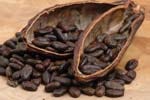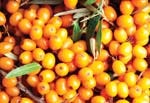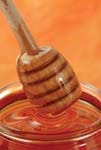Nutricosmetic ingredients that get better with ageNutricosmetic ingredients that get better with age
While technology has introduced new nutraceuticals for nutricosmetic applications, some age-old stalwarts have stood the test of time and continue to be destination ingredients for consumers seeking ingestible beauty aids.Join industry experts for 2 days of inner beauty insights at the NutriCosmetic Summit.

Products called nutricosmetics, which have more than just a superficial effect on one's appearance, are rapidly gaining ground because of the growing realization that certain foods can help one look (and feel) one's best. Despite the onslaught of lotions and surgical procedures with the promise of instant and eternal youth, consumers are having a hard time letting go of the tried and tested potions that beautified and rejuvenated their ancestors for centuries. The global reach for ingestibles that benefit the insides and the outsides will net $4.24 billion by 2017, according to Global Industry Analysts.
Anti-aging concerns constitute the single largest market worldwide. But it is age-old cultural practices that have positioned Japan as the highly developed global leader in the nutricosmetics market. Europe trails as the next largest and most influential global market, while the giant (and chronologically much younger) U.S. market is still just waking up to realize the benefits of beauty from within.
Collagen
Traditional Japanese culture recognizes collagen as an anti-aging nutrient to help skin remain firm and youthful. Fish collagen soups and hot beverages with collagen are an essential part of the Japanese health and beauty regimen – a good reason why Nestlé's collagen-fortified instant coffee is so successful in Japan.
B ut the health benefits of collagen are not unique to Asians alone. Saint Hildegarde von Bingen (1098-1179), the German Benedictine abbess and polymath, identified collagen to be beneficial for joint pain. Collagen is a key protein in the body and ensures cohesion, elasticity and regeneration of skin, cartilage and bone. Whether derived from terrestrial (bovine or porcine) or marine sources, the amino acid makeup provides various health and beauty benefits.
ut the health benefits of collagen are not unique to Asians alone. Saint Hildegarde von Bingen (1098-1179), the German Benedictine abbess and polymath, identified collagen to be beneficial for joint pain. Collagen is a key protein in the body and ensures cohesion, elasticity and regeneration of skin, cartilage and bone. Whether derived from terrestrial (bovine or porcine) or marine sources, the amino acid makeup provides various health and beauty benefits.
Tampa, Fla., based ResVitále combined the advantage of collagen with hyaluronic acid and resveratrol to boost skin hydration, firmness and elasticity in Collagen Enhance Chews, a tasteful alternative to pills and capsules. Dutch biotech company, Rousselot, uses special concentration and sterilization processes to boost glycine, proline and hydroxyproline in Peptan, a branded collagen for food and beverage applications. Scientific literature explains that ingestion of hydrolyzed collagen produces peptides that stimulate fibroblasts cells in the skin to produce and reorganize new collagen fibers, which upon bundling add to the elasticity of the skin.
Another reigning ancient beauty powerhouse from the East is turmeric, which contains curcuminoids – bioactive compounds that are well-researched and demonstrated to be potentially useful in mitigating inflammation and several types of skin cancer, including melanomas. Turmeric has been clinically validated for beneficial antioxidant effects and inhibitory effects on cyclooxygenase 2 (COX-2). This makes turmeric derivatives useful as an ingredient in anti-aging formulations – topical and oral – to foster general skin health and integrity. Additionally, they help prevent connective tissue breakdown by inhibiting destructive enzymes such as collagenase, elastase and hyaluronidase.
Ayurvedic medicine practiced for millennia in India has long recognized turmeric as a multifunctional ingredient nutrient, a fact that is only now gaining popularity with Western consumers. Although companies like Dragon Nutrition in the U.K. have formulated Little Dragon shots with turmeric extract, most consumers still reach for turmeric or curcumin supplements for beauty benefits.
Carotenoids
While ambiguity lingers about whether the addition of fruits, vegetables, vitamins and minerals to cosmetics can produce measurable effects on skin and appearance, there has been universal agreement for centuries that fruits, vegetables, vitamins and minerals are unequivocally beneficial to health and appearance. This consumer confidence may explain why cosmetics, drug and food companies are investing and pushing the boundaries of foods and beverages to foster skin and hair health, and beauty. The general belief is that the skin is not only nourished on the outside with moisturizing creams and topical solutions, but also from the inside with the right nutrients.
 According to Frost & Sullivan's Yong-Li Qian, carotenoids represent 23.3 percent market share – the second largest – in the nutricosmetics ingredients sector. Key carotenoids include beta-carotene, lutein and lycopene, and may be extracted from vegetables and algae.
According to Frost & Sullivan's Yong-Li Qian, carotenoids represent 23.3 percent market share – the second largest – in the nutricosmetics ingredients sector. Key carotenoids include beta-carotene, lutein and lycopene, and may be extracted from vegetables and algae.
Although a latecomer to culinology because they were used only in foods in the 16th century by the Spanish, tomatoes have been helping people with health and beauty without people even knowing. Tomatoes contain a number of carotenoids, the most notable of which are phytoene and phytofluene. Because phytoene and phytofluene are colorless, they absorb light only in the UV range. When ingested, these carotenoids accumulate in the human skin, where they are ideally suited to protect the skin by absorbing UVA and UVB radiation. These potent antioxidants and anti-inflammatory agents help brighten and lighten the skin, and unlike their highly unstable colored cousins, are stable and perfectly versatile in ingestibles and topical applications.
Lycopene, another class of carotenoids found in tomatoes, watermelon and leafy greens, is a potent antioxidant with antiproliferative properties that make it valuable in the prevention of some cancers. Beta-carotene, responsible for the orange color of carrots and also found in tomatoes and green leafy vegetables, is the best known carotenoid and used largely for coloring food and thereby boosting its nutricosmetic contribution to the mainstream diet.
Another carotenoid popular for coloring food, and with nutricosmetic effects, is lutein, a potent antioxidant and rich, red-orange xanthophyll carotenoid found in spinach, kale, marigold flowers and algae. Astaxanthin is a marine carotenoid derived from krill and algae, and highly sought after for its anti-aging benefits. All of these have been relied upon for centuries, but have become more popular today thanks to extraction, separation technologies and scientific evidence.
French Maritime pine bark
Another latecomer to the nutricosmetics scene, but one used for centuries, is Pycnogenol. Pycnogenol is the patented trade name for a water extract of the bark of the French maritime pine that grows in coastal southwest France. Its chemical constituents include oligomeric proanthocyanidins (OPCs), bioflavonoids such as catechin, epicatechin, phenolic fruit acids (ferulic acid and caffeic acid), taxifolin and procyanidins – oligometric catechins found at high concentrations in red wine, grapes, cocoa, cranberries, apples and French maritime bark.
Pycnogenol has been used in a wide range of cosmetics and dietary supplement formulations for its ability to interact with collagen and elastin to hasten wound healing and increase skin elasticity. Its class of compounds is known to enhance skin microcirculation for better nutrition, oxygenation and hydration as well as better detoxification. It's perhaps the main reason why our grandmothers touted the benefits of fruits and vegetables. It helps that Pycnogenol is one of the most evidence-based health ingredients in the nutricosmetics industry with more than 250 scientific publications demonstrating its safety, nontoxicity and clinical efficacy.
Cocoa
Cocoa derivatives – fats and flavonoids – have sustained their position as a good food for body, beauty and soul since the time of the Mayans. Theobroma cacao was cultivated as early as 600 B.C.E. The beans were used as currency and as the basis of beverages and preparations for skincare.
 In 1519, Spanish conquistadors tasted a ceremonial drink called kukuh or xocolatl made by the Aztecs in Mexico and adapted by apothecary monks for Spanish tastes. The drink enjoyed for its mood-soothing effects was also much sought after for other medicinal properties, including skin care. It was only in 1657, when it arrived in London, that it was converted into an expensive luxury drink, and then a bar pressed with milk and sugar for indulgence.
In 1519, Spanish conquistadors tasted a ceremonial drink called kukuh or xocolatl made by the Aztecs in Mexico and adapted by apothecary monks for Spanish tastes. The drink enjoyed for its mood-soothing effects was also much sought after for other medicinal properties, including skin care. It was only in 1657, when it arrived in London, that it was converted into an expensive luxury drink, and then a bar pressed with milk and sugar for indulgence.
While cocoa fats are renowned for their role in hydrating skin in topical applications, only recently have cocoa flavonoids taken a lead role in health and beauty thanks to a body of 100 peer-reviewed papers published on the "health benefits of flavonoids." Studies suggest that cocoa flavonoids increase endothelial nitric oxide synthesis leading to a vasorelaxant effect that visibly can enhance skin health. The modulation of eicosanoid synthesis by cocoa flavonoids helps reduce blood vessel vulnerability and platelet clumping, and goes a long way to enhance cardiovascular health and skin health in general.
That consumers "get" the health and beauty benefits of flavonoids is obvious from the growing incorporation of cocoa derivatives such as Acticoa (Barry Callebaut), Cocoapro (Mars), CocoaActiv (Naturex), and many non-branded flavonol preparations in food and dietary supplements.
Vitamin C
Although the role of vitamin C in scurvy and general skin health was discovered only in the 1700s, citrus fruits and other vitamin C containing fruits and vegetables have been associated with inner and outer beauty since ancient times. Topically, vitamin C stimulates collagen and elastin, which are vital in keeping skin healthy and firm and which begin to weaken and contribute to sagging skin as one ages.
The Kline Group predicts growth of vitamin C to continue as health conscious consumers become increasingly aware and confident about selecting the right products for their nutrition and personal care. Vitamin C in nutricosmetic applications is further bolstered by support from the American Academy of Dermatology; it states that vitamin C, when applied topically, produces positive results in the production of collagen, and also that vitamin C has antioxidant properties, which may be helpful in reversing the negative effects of UV radiation. According to Frost & Sullivan's Leonidas Dokos, global programme manager, vitamin C, along with vitamins A and E, holds the third largest market share representing 23.1 percent of global revenues.
Comeback players
Superfruits
Some superfruits such as pomegranate, açai, seabuckthorn and goji berry have been used for centuries as part and parcel of the health and beauty rituals in established civilizations but only recently found their way into the Western world. Consumers value their antioxidative potential as well as their anti-inflammatory properties for inside and outside health. In large part, it is believed that the success of superfruits was driven by Hollywood and by the persuasive powers of health spas.
Althou gh not really a superfruit but a superfood, Camellia sinensis (green and black tea), has been prominent in the health and beauty regimen of Asian and Middle Eastern civilizations for millennia. Tea extracts offer a wide range of bioactives, including active polyphenol components such as flavonoids and catechins, which are now increasingly showing up in preparations for beauty.
gh not really a superfruit but a superfood, Camellia sinensis (green and black tea), has been prominent in the health and beauty regimen of Asian and Middle Eastern civilizations for millennia. Tea extracts offer a wide range of bioactives, including active polyphenol components such as flavonoids and catechins, which are now increasingly showing up in preparations for beauty.
Omega-3s
The category of omega-3 fatty acids has emerged as a recent key market trend with manufacturers of foods and supplements seeking to capitalize on its much-publicized potential for health and beauty. Consumers are only now beginning to understand the difference between marine and land sources, but continue to be befuddled by the health benefits of the long and short chains. But they do understand one thing: that some sources of omega-3s are just plain good for every part of you.
Significant omega-3s players that have stood the test of time in the nutricosmetics sector are chia, also known as Salvia hispanica. A native of Central America, chia seeds were historically used as part of the diet of pre-Columbian Aztec and Mayan cultures and to relieve joint pain and treat skin disorders. Chia seeds are rich in omega-3 fatty acids known to reduce inflammation and help with hydration of the skin.
Old-world migrations
 Coconut milk
Coconut milk
Coconut water, the liquid endosperm of green coconuts (Cocos nucifera), has been relied upon for its hydration benefits for millennia. A natural rehydration medium, coconut water has gained popularity as a supplement in nutrient media for tissue culture because of its isotonic concentration of electrolytes such as potassium and magnesium.
Resveratrol
Resveratrol, believed to be one of the underlying explanations for the French Paradox (why the French do not disproportionately suffer from cardiac and other aging ailments despite their rich diet), has been growing in popularity in supplements and is now moving into new foods and drinks targeted to people who want to look good inside and out.
 Honey
Honey
Manuka honey, unique to New Zealand, has been used for centuries by the Maori people in traditional remedies. Today, it has gained worldwide popularity, especially among battlefield medics for its remarkable anti-bacterial and health benefits. Sourced and harvested in New Zealand, manuka assists the body's ability to improve skin conditions and heal rapidly.
5 drivers of nutricosmetic success
What's driving the continued popularity of these ancient foodstuffs in the nutricosmetics applications sector?
Established scientific credibility
Each of these nutraceuticals is supported with solid scientific evidence of benefits in the form of clinical trials and evidence-based scientific analyses.
History of use
While consumers might be confused or not aware of the various bioactive compounds mentioned above, they are generally confident in the health benefits of the class of compounds (carotenoids or omega-3s) or the source (cocoa or tomato) largely due to folkloric anecdotes and, perhaps, some gentle nagging from their grandmothers or other strong female influencers.
Sensory attributes
Nutricosmetics manufacturers tend to select ingredients on the basis of the strength of their health claims. Consumers, however, are more drawn to products because of their performance – provided they taste good.
Aging concerns
People everywhere are outliving their ancestors and are driven to enhance not only their quality of life but also how they perform and appear.
Increased interaction between food, pharma and cosmetics industries
Every sector is focused on effective anti-aging benefits for consumers and is looking to history for materials for instant acceptance.
The use of food ingredients in ingestible health and beauty aids has only one way to go: up! People understand that beauty from within is not just about skin health and appearance, but also a reflection of one's internal health.
About the Author
You May Also Like



.jpg?width=700&auto=webp&quality=80&disable=upscale)

.png?width=700&auto=webp&quality=80&disable=upscale)